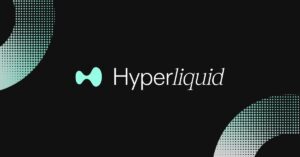Unlocking TVL and Token Caps: Key Insights for Crypto Investors

The Future of Decentralized Finance (DeFi) in 2025: Key Statistics and Trends
Introduction to DeFi‘s Evolution
Envision a financial landscape devoid of traditional banks, geographical limitations, and bureaucratic hurdles, governed solely by code. This is the reality of the DeFi ecosystem as we approach 2025, transitioning from experimental frameworks to a comprehensive alternative financial system. Millions now depend on DeFi platforms for various services, including lending, trading, saving, and yield generation. But just how expansive is this market? Let’s delve into the statistics that characterize this rapidly evolving sector.
- Introduction to DeFi‘s Evolution
- Key Insights into the DeFi Market
- Major Highlights
- Breakdown of DeFi Applications
- Market Segmentation by Use Case
- Total Value Locked (TVL) in DeFi
- Current State of TVL
- Market Capitalization of Leading DeFi Tokens
- Overview of Token Valuations
- Leading Investors in Decentralized Finance
- Top Investment Figures
- Trends in DeFi Adoption
- Growth Patterns
- DeFi Protocol Usage by Blockchain
- Blockchain Performance
- Regional Market Share in Decentralized Finance
- Global Distribution
- Lending and Borrowing Dynamics in DeFi
- Current Lending Landscape
- Decentralized Exchange (DEX) Performance
- Trading Volume and User Engagement
- Future Growth Outlook for Decentralized Finance
- Market Projections
- Stablecoin Integration in DeFi
- Current Trends in Stablecoin Usage
- Yield Farming and Staking Trends
- Participation Rates and Asset Management
- Startups in the Cryptocurrency Space
- Blockchain Platform Utilization
- Leading DeFi Projects by User Engagement
- User Activity Metrics
- Security Challenges in DeFi
- Incidents and Mitigation Strategies
- Decentralized Science (DeSci) Market Overview
- Market Share Distribution
- Regulatory Developments Impacting DeFi
- Changes and Implications
- Institutional Investment Trends in DeFi
- Capital Influx and Participation
- Recent Developments in the DeFi Landscape
- Innovations and Trends
- Conclusion: The Future of DeFi
Key Insights into the DeFi Market
Major Highlights
- The Total Value Locked (TVL) in DeFi protocols has surged to $123.6 billion in 2025, marking a 41% increase from the previous year.
- The market capitalization of the top 100 DeFi tokens stands at $98.4 billion as of Q2 2025.
- Ethereum continues to dominate, hosting over 63% of all DeFi protocols and transaction volumes.
- By mid-2025, more than 14.2 million unique wallets have engaged with DeFi platforms.
- DeFi lending platforms have recorded over $51 billion in outstanding loans by June 2025.
Breakdown of DeFi Applications
Market Segmentation by Use Case
- Data & Analytics holds the largest segment at 15%, underscoring the importance of data-driven insights in decentralized finance.
- Decentralized Exchanges (DEXs) also account for 15%, reflecting the growing preference for non-custodial trading solutions.
- Payments represent 12%, indicating a rise in peer-to-peer and cryptocurrency payment methods.
- Stablecoins contribute 11%, highlighting their role in ensuring price stability within DeFi transactions.
- Marketplaces & Liquidity make up 10%, foundational to DeFi’s liquidity pools and trading hubs.
- Compliance & Identity solutions also account for 10%, emphasizing the integration of security and regulatory compliance.
- The Prediction Industry captures 9%, reflecting interest in decentralized forecasting platforms.
- Asset Tokenization stands at 9%, showcasing the digitization of real-world assets like real estate and art.
- Other Applications comprise 9%, indicating a diverse range of emerging use cases.
Total Value Locked (TVL) in DeFi
Current State of TVL
- As of Q2 2025, $123.6 billion is locked across DeFi protocols worldwide.
- Ethereum leads with $78.1 billion in TVL, representing over 63% of the total DeFi ecosystem.
- Arbitrum has shown significant growth, reaching $10.4 billion in TVL, a 70% increase year-over-year.
- Optimism has more than doubled its TVL to $5.6 billion from $2.3 billion in 2024.
- BNB Chain has seen moderate growth, achieving $7.9 billion in TVL in 2025.
- Base, Coinbase’s Layer-2 solution, has reached $2.2 billion in TVL since its launch in late 2023.
- Liquid staking protocols now represent 27% of the total TVL, with Lido managing $34.8 billion alone.
- The average daily TVL volatility has decreased to 1.4%, indicating greater stability in the ecosystem.
- Over 150 protocols now hold more than $100 million in locked assets.
Market Capitalization of Leading DeFi Tokens
Overview of Token Valuations
- The DeFi token market cap is currently $98.4 billion, reflecting a 38% increase from $71.2 billion last year.
- Uniswap’s UNI token leads with a market cap of $12.3 billion.
- Aave (AAVE) follows with a valuation of $7.5 billion, driven by demand for lending services.
- Lido DAO (LDO) has seen its market cap rise to $9.1 billion by Q2 2025.
- MakerDAO’s MKR token has rebounded to $4.6 billion.
- Curve (CRV) maintains a market cap of $1.9 billion despite some concerns.
- GMX, a perpetual DEX token, has crossed $2.5 billion, doubling since last year.
- Synthetix (SNX) remains stable at $1.1 billion.
- The average market cap of the top 50 DeFi tokens has grown by 36.7% year-over-year.
- More than 23 DeFi tokens are now valued above $1 billion.
Leading Investors in Decentralized Finance
Top Investment Figures
- About Capital Management leads with a total investment of $1 billion, showcasing significant commitment to the DeFi sector.
- Far Peak Acquisition follows with $550 million, reinforcing its strong position in DeFi funding.
- GEM Digital has invested $531.7 million, indicating steady confidence in decentralized finance.
- Andreessen Horowitz has contributed $496.3 million, further establishing its influence in Web3 and DeFi.
- Circle has committed $454.8 million, reflecting its involvement in stablecoins and DeFi infrastructure.
- Binance has invested $453.1 million, actively supporting DeFi growth through strategic funding.
- Marsh has entered with $448.7 million, showing increasing interest from traditional finance in decentralized technologies.
- Continue Capital has invested $370.5 million, indicating notable support for early-stage DeFi projects.
- Digital Currency Group rounds out the top nine with $334.5 million in investments.
Trends in DeFi Adoption
Growth Patterns
- The number of active DeFi users reached 14.2 million wallets globally by mid-2025.
- Weekly DeFi transaction volume surpassed $48 billion.
- The average DeFi user conducts 11.6 transactions monthly.
- Mobile DeFi wallet usage has grown by 45%, now comprising 58% of total users.
- First-time user onboarding increased by 29%, aided by platforms offering gasless transactions and simplified user experiences.
- Over 2,000 dApps now incorporate DeFi features for lending, staking, or trading.
- Cross-chain DeFi activity has surged by 52%, driven by bridges and Layer-2 solutions.
- More than 110 countries report active DeFi usage.
- The global DeFi search interest index reached 92 out of 100 on Google Trends, its highest in 18 months.
- Among new users, Gen Z (ages 18-25) constitutes 38% of first-time DeFi wallets in 2025.
DeFi Protocol Usage by Blockchain
Blockchain Performance
- Ethereum continues to lead DeFi in 2025, hosting 63% of all protocols and over $78.1 billion in TVL.
- BNB Chain supports around 12% of DeFi TVL, with over $7.9 billion locked across more than 310 dApps.
- Arbitrum has surpassed $10.4 billion in TVL, accounting for 8.4% of all DeFi liquidity.
- Polygon has steadily grown to $6.1 billion, reflecting its strength in NFT-DeFi hybrids and Web3 gaming.
- Optimism holds $5.6 billion in TVL and has integrated with over 75 DeFi platforms.
- Base has reached $2.2 billion, becoming a hub for institutional DeFi activity.
- Avalanche maintains $3.7 billion in DeFi value, with strong adoption in Asia-Pacific markets.
- Fantom has rebounded to $1.5 billion in DeFi usage, driven by gas efficiency upgrades.
- zkSync Era has captured $1.1 billion in TVL, as ZK-rollup technology gains traction among privacy-focused users.
- Cross-chain DeFi activity via protocols like LayerZero and Axelar has increased 52% year-over-year.
Regional Market Share in Decentralized Finance
Global Distribution
- North America leads the global DeFi market with a 37% share, driven by strong institutional adoption and innovation.
- Europe holds the second-largest share at 29%, reflecting robust regulatory developments and active blockchain communities.
- Asia Pacific captures 23%, fueled by rapid fintech growth and increasing crypto awareness in countries like Singapore, Japan, and South Korea.
- Latin America represents 8%, where DeFi is increasingly seen as a solution to financial exclusion and currency instability.
- The Middle East & Africa (MEA) contributes 3%, with growing interest but limited infrastructure slowing broader adoption.
Lending and Borrowing Dynamics in DeFi
Current Lending Landscape
- DeFi lending platforms currently hold $51.2 billion in outstanding loans as of June 2025.
- Aave remains the largest DeFi lending platform, with over $14.6 billion in active liquidity pools.
- Compound supports $8.1 billion in supplied assets and $5.4 billion in borrowed funds.
- Spark Protocol (by MakerDAO) has grown to $2.7 billion in loan volume, offering yield-optimized borrowing.
- Mantis, a newer Solana-based lending dApp, has achieved $970 million in loan origination within its first year.
- Over-collateralization ratios have decreased from 163% in 2024 to 151% in 2025, reflecting improved risk management.
- The average interest rate on DeFi stablecoin loans is now 4.8%.
- Flash loan activity reached $2.1 billion across 30 protocols in Q1 2025.
- Lending of real-world assets (RWAs) surged to $1.9 billion, with tokenized T-bills and invoices leading.
- Institutional lending via whitelisted DeFi pools surpassed $9.3 billion, a 60% increase from the previous year.
Decentralized Exchange (DEX) Performance
Trading Volume and User Engagement
- Weekly DEX trading volume averaged $18.6 billion in Q2 2025, a 33% increase year-over-year.
- Uniswap leads the DEX sector with $6.7 billion in weekly volume and over 6.3 million active traders.
- PancakeSwap, based on BNB Chain, processed $2.2 billion in trades weekly.
- Curve Finance has seen a steady rise to $1.5 billion in weekly volume, largely driven by stablecoin swaps.
- GMX, a perpetual DEX, now accounts for $1.1 billion in weekly volume across Arbitrum and Avalanche.
- dYdX V4, now operating on Cosmos, handles over $4.3 billion in derivatives volume weekly.
- More than 9.7 million unique wallets interacted with DEXs by mid-2025, up from 6.8 million last year.
- The average DEX fee has dropped to 0.18%, enhancing competitiveness with centralized exchanges.
- Aggregator platforms like 1inch and Matcha processed over $3.9 billion in routing volume weekly.
- Mobile-first DEXs have rapidly expanded, with Solflare DEX and Trust Wallet Swap gaining 1.2 million new users in 2025.
Future Growth Outlook for Decentralized Finance
Market Projections
- The global DeFi market is projected to grow from $30.07 billion in 2024 to an impressive $178.63 billion by 2029.
- By 2025, the market is expected to reach $42.76 billion, indicating significant early-stage growth.
- The market is forecasted to expand at a CAGR of 43.0%, reflecting rapid adoption and strong investor confidence.
- Growth is anticipated to continue steadily, with marked increases in market size expected in 2026 and 2027, reinforcing long-term scalability.
Stablecoin Integration in DeFi
Current Trends in Stablecoin Usage
- As of June 2025, $146 billion worth of stablecoins are circulating within DeFi protocols globally.
- USDC is the most widely integrated stablecoin, appearing in 92% of top DeFi lending and DEX protocols.
- DAI supply stands at $8.4 billion, with over 71% of its usage tied to DeFi strategies.
- Tether (USDT) remains dominant on BNB Chain and Tron, but only 58% of its supply is active in DeFi.
- Ethena’s USDe, a new synthetic stablecoin, reached $1.9 billion in DeFi integration within six months.
- sUSD and LUSD together represent $2.7 billion in decentralized-only stablecoin usage.
- Over 1,700 DeFi applications support stablecoin swaps and yield farming directly in their interfaces.
- The top 5 DeFi protocols by TVL all utilize stablecoins as their base collateral.
- Stablecoin-backed synthetic assets (e.g., real estate or gold) have grown to $3.2 billion in market cap.
- Cross-chain stablecoin bridges transferred over $12.6 billion in value in the first half of 2025.
Yield Farming and Staking Trends
Participation Rates and Asset Management
- Staking and yield farming have captured over $63.2 billion in assets across DeFi protocols in 2025.
- Lido, the leader in liquid staking, manages over $34.8 billion in staked ETH and derivatives.
- Rocket Pool has grown to $4.6 billion, focusing on retail-friendly validator offerings.
- Yield farming APRs have stabilized to an average of 6.2%.
- Protocols like Pendle and Ether.fi attracted over $2.3 billion combined through liquid yield tokenization.
- Convex Finance still holds $3.9 billion, despite a decline in new farming incentives.
- Auto-compounding vaults, such as Yearn’s yVaults, saw $5.1 billion in deposits in 2025.
- Staked stablecoin pools reached $11.7 billion, especially popular among bear market strategies.
- Over 60% of long-term DeFi users engage in staking or liquidity mining monthly.
- Staking of non-EVM tokens (like SOL, ATOM, and NEAR) in DeFi wrappers reached $3.4 billion, up from $2.1 billion last year.
Startups in the Cryptocurrency Space
Blockchain Platform Utilization
- Ethereum remains the leading blockchain for startups, powering 36% of all coin-based projects.
- Other emerging blockchains account for 36%, indicating a trend toward platform diversity.
- BDC supports 16% of startups, reflecting moderate adoption in the decentralized ecosystem.
- Solana is utilized by 12% of startups, appealing for its scalability and lower transaction costs.
Leading DeFi Projects by User Engagement
User Activity Metrics
- Uniswap leads with over 6.3 million active wallets in 2025, solidifying its position in decentralized trading.
- Aave has engaged over 3.8 million active users in lending and borrowing activities.
- Lido has surpassed 5.2 million unique staking participants.
- PancakeSwap remains a top performer on BNB Chain with 2.4 million weekly active wallets.
- Curve Finance processed transactions from over 1.9 million users in Q2 2025.
- GMX has gained traction among leveraged traders, surpassing 850,000 monthly active wallets.
- Balancer has returned to growth with 410,000 monthly users leveraging composable DeFi strategies.
- dYdX V4 recorded 1.3 million monthly users following its migration to Cosmos.
- Venus Protocol on BNB Chain saw an increase to 920,000 borrowers and suppliers.
- Over 72% of DeFi activity is now concentrated among the top 10 protocols by user engagement.
Security Challenges in DeFi
Incidents and Mitigation Strategies
- DeFi protocols faced $712 million in exploited value during H1 2025.
- Cross-chain bridges accounted for 38% of exploited value, with several major attacks exceeding $50 million each.
- Flash loan attacks resulted in $122 million in losses across 17 incidents.
- The average detection time for exploits has improved to 14 minutes.
- Platforms like Immunefi awarded over $21 million to white-hat hackers in 2025.
- Smart contract insurance providers like Nexus Mutual paid out $47.3 million in verified claims this year.
- Governance attacks have significantly decreased, with only 6 known cases in 2025.
- The use of formal verification tools in DeFi development has risen by 61%, helping to mitigate critical bugs.
- The frequency of audits for top DeFi protocols has increased to an average of 3.2 audits per year.
- DeFi firewalls and on-chain threat detection systems are now integrated into 78% of active protocols.
Decentralized Science (DeSci) Market Overview
Market Share Distribution
- BIO Protocol holds the largest share of the DeSci market at 29.1%, demonstrating its leadership in this domain.
- OriginTrail (TRAC) follows with 21.2%, making it a significant player alongside BIO.
- AXGT commands 6.2%, indicating strong momentum among mid-tier DeSci protocols.
- RSC contributes 5.5%, steadily supporting the ecosystem’s growth.
- HPO comprises 4.1%, while VITA and YNE hold shares of 3.9% and 3.7%, respectively.
- Other niche projects include HAIR (2.5%), GALEON (1.4%), and GENOME (1.2%).
- The Others category still represents a significant 21.2%, reflecting a broad range of smaller DeSci initiatives gaining traction.
Regulatory Developments Impacting DeFi
Changes and Implications
- U.S. Treasury guidance in 2025 clarified that non-custodial DeFi applications are not subject to the same reporting requirements as centralized exchanges.
- SEC enforcement actions have decreased by 48%, focusing primarily on fraud and rug-pulls.
- Europe’s MiCA regulation took effect in early 2025, impacting stablecoin issuance and disclosure standards.
- Over 22 DeFi platforms have voluntarily registered with the EU Digital Asset Service Providers (DASPs).
- Japan has introduced licensing for DeFi front ends while maintaining legal neutrality for smart contracts.
- The Middle East is emerging as a regulatory-friendly zone, with Dubai and Abu Dhabi hosting 45 DeFi startups.
- In the U.S., Wyoming and Texas continue to support decentralized entities under their crypto-friendly laws.
- Global FATF recommendations now include DeFi in their compliance framework, though implementation remains inconsistent.
- DeFi lobbying groups, such as the Blockchain Association and DeFi Education Fund, spent over $19 million advocating in Washington in 2025.
- Over 18 jurisdictions have introduced sandbox programs tailored for testing DeFi innovations.
Institutional Investment Trends in DeFi
Capital Influx and Participation
- Institutional capital in DeFi has reached $41 billion in total exposure by mid-2025.
- BlackRock, Fidelity, and Franklin Templeton are actively participating through tokenized treasuries and DeFi liquidity provisioning.
- Over 60 crypto-native funds now manage DeFi-only portfolios, up from 42 last year.
- On-chain treasury management tools for DAOs and funds manage more than $9.2 billion in assets.
- Permissioned DeFi pools, such as those launched by Aave Arc and Maple Finance, control $6.4 billion in volume.
- KYC-compliant staking services have expanded to institutions, reaching $3.1 billion in staked ETH.
- Tokenized real-world assets (RWAs) held by funds have surpassed $4.7 billion in value.
- Over 900 institutions are now whitelisted on various permissioned DeFi platforms.
- Stablecoin holdings by funds and institutions have exceeded $12.5 billion, primarily in USDC and tokenized T-bills.
- Treasury allocation to DeFi among publicly listed blockchain companies averages 11.3%.
Recent Developments in the DeFi Landscape
Innovations and Trends
- Layer-2 DeFi has expanded rapidly in 2025, with Base, Linea, and zkSync Era capturing 22% of weekly volume.
- The emergence of AI-integrated DeFi protocols has seen projects like Gauntlet AI and FetchFi surpass $850 million in combined usage.
- DePIN (Decentralized Physical Infrastructure) tokens linked to DeFi have reached $1.1 billion in liquidity pools.
- Restaking services have become a major trend, with EigenLayer attracting over $6.3 billion in deposits.
- Modular DeFi architectures are gaining traction, particularly with Celestia and Avail supporting data availability layers.
- The launch of DeFi ETFs in Switzerland and Singapore attracted over $540 million in the first quarter alone.
- Gasless transactions through ERC-4337 and account abstraction have become widely adopted, especially among mobile users.
- AI-driven on-chain risk models are now embedded in 38% of lending and insurance protocols.
- Major wallets like MetaMask and Rabby now feature integrated DeFi dashboards and fiat onramps.
- DeFi has been integrated into over 30 enterprise blockchain pilots, particularly in supply chain and invoice financing sectors.
Conclusion: The Future of DeFi
Decentralized Finance in 2025 has transitioned from a niche concept to a global, programmable, and increasingly regulated sector managing over $120 billion in locked value. With growing institutional participation, enhanced security measures, and clearer regulatory frameworks, the DeFi ecosystem is evolving into a parallel financial infrastructure. From wallets in Lagos to hedge funds in New York, DeFi is steadily becoming the backbone of tomorrow’s open economy.







